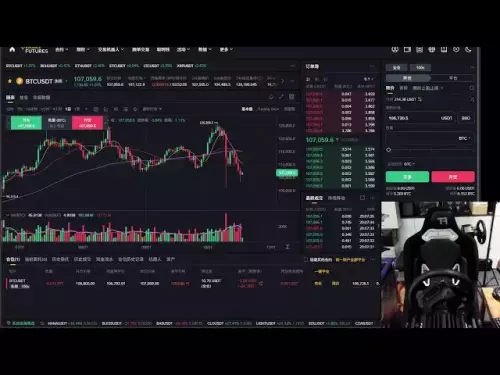-
 bitcoin
bitcoin $106975.071866 USD
-0.29% -
 ethereum
ethereum $3871.670850 USD
-0.07% -
 tether
tether $1.000261 USD
-0.01% -
 bnb
bnb $1084.417621 USD
-0.50% -
 xrp
xrp $2.348167 USD
0.82% -
 solana
solana $185.621736 USD
0.45% -
 usd-coin
usd-coin $0.999833 USD
-0.04% -
 tron
tron $0.313423 USD
0.81% -
 dogecoin
dogecoin $0.188856 USD
0.54% -
 cardano
cardano $0.630416 USD
-0.49% -
 hyperliquid
hyperliquid $36.506353 USD
2.24% -
 ethena-usde
ethena-usde $0.999584 USD
-0.01% -
 chainlink
chainlink $16.750026 USD
-0.77% -
 stellar
stellar $0.313373 USD
0.37% -
 bitcoin-cash
bitcoin-cash $465.978560 USD
-1.57%
Can you explain the mark price for XRP contracts?
The mark price in XRP futures prevents manipulation by using a spot index and funding rates, ensuring fair liquidations and stable valuations during volatility.
Oct 16, 2025 at 10:37 am
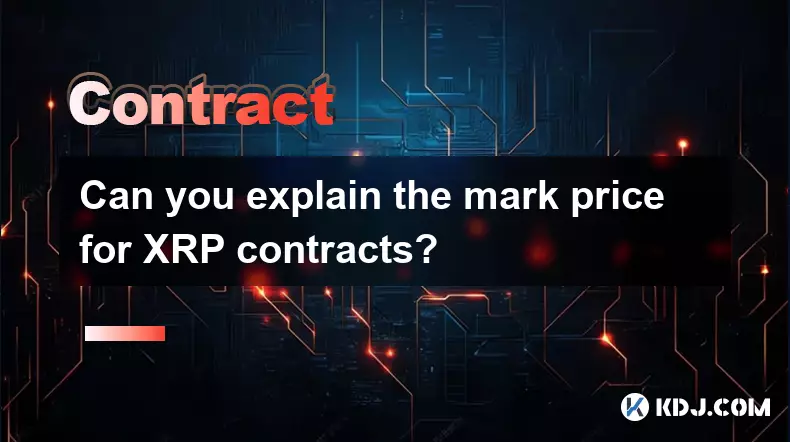
Understanding Mark Price in XRP Futures Trading
1. The mark price for XRP contracts serves as a mechanism to prevent market manipulation and ensure fair valuation during trading. Unlike the last traded price, which reflects the most recent transaction, the mark price is derived from the underlying spot market of XRP. It uses data from major exchanges to calculate an index price, which is then combined with a funding rate component to form the final mark price.
2. This system helps maintain contract stability, especially during periods of high volatility. When sudden price spikes or drops occur on a single exchange, relying solely on that exchange’s price could lead to inaccurate liquidations. By using a broader index, the mark price smooths out anomalies and offers a more representative value of XRP across the market.
3. Exchanges often source the spot price of XRP from a basket of top-tier platforms such as Binance, Kraken, and Bitstamp. These are selected based on trading volume, reliability, and liquidity. The average of these prices forms the index price, which becomes the baseline for the mark price calculation.
4. Funding rates are factored into the mark price to align perpetual contract prices with the actual spot market. In XRP perpetual futures, traders pay or receive periodic payments based on whether longs or shorts dominate. This funding mechanism discourages prolonged divergence between the contract price and the spot price, helping the mark price stay anchored.
How Mark Price Affects Liquidations
1. The mark price plays a crucial role in determining when positions get liquidated. Margin requirements and maintenance levels are assessed against the mark price rather than the last traded price. This prevents scenarios where a brief flash crash on one exchange triggers unwarranted liquidations across all users.
2. If the last traded price of an XRP contract drops sharply due to thin order books or spoofing, but the mark price remains stable, the system will not initiate liquidation. This protective layer ensures traders aren’t unfairly removed from their positions due to artificial price movements.
3. Conversely, if both the mark price and last traded price show sustained downward trends, indicating genuine market movement, then liquidation thresholds may be reached. This dual-check system enhances fairness and reduces systemic risk within the derivatives market.
4. Traders holding leveraged XRP positions must monitor both the mark price and their margin balance. Even if the order book appears calm, changes in the spot index or funding rates can shift the mark price gradually, affecting equity calculations over time.
The Role of Funding Rates in Mark Price Formation
1. Funding rates are recalculated at regular intervals—often every 8 hours—and influence the mark price by closing the gap between perpetual contract prices and spot values. When XRP futures trade above spot, longs pay shorts, pushing the effective cost down. When below, shorts pay longs, pulling the price up.
2. This continuous adjustment ensures that the mark price doesn’t deviate significantly from real-world XRP value. Without this mechanism, traders could exploit price differences through arbitrage, destabilizing the market structure.
3. High funding rates signal strong bullish or bearish sentiment. For instance, persistently positive funding in XRP perpetuals suggests aggressive long positioning. The mark price incorporates this pressure, making it harder for positions to remain open without adequate margin support.
4. Some derivative platforms use a capped funding rate model to avoid extreme imbalances. While the mark price still reflects spot trends, limits on funding prevent excessive cost burdens on either side of the market, maintaining participation and liquidity.
Practical Implications for XRP Traders
1. Active participants in XRP futures should configure alerts for both mark price and funding rate changes. Unexpected shifts can impact unrealized PnL even without direct price action on their exchange.
2. Using the mark price as a reference helps traders assess true position health beyond superficial price charts. It reveals whether their margin is under pressure due to systemic factors rather than temporary slippage.
p>3. Arbitrageurs rely on discrepancies between the mark price and futures price to execute convergence trades. When the futures price drifts too far from the mark, they step in to profit from the correction, reinforcing market efficiency.
4. New traders often misunderstand why their positions liquidate despite favorable-looking charts. Education around how the mark price functions can reduce confusion and improve risk management practices in volatile conditions.
Frequently Asked Questions
What happens if the spot price of XRP differs drastically across exchanges?The index used for the mark price typically averages data from multiple reliable sources, minimizing the impact of outliers. Outlier prices from low-volume platforms are often excluded or weighted less heavily to preserve accuracy.
Can the mark price be manipulated?Direct manipulation is highly unlikely due to the diversified data sources and built-in safeguards. Even if one exchange experiences irregular pricing, the index dilutes its influence. Additionally, funding mechanisms react dynamically to counter artificial distortions.
Why does my unrealized PnL change even when the chart seems flat?Shifts in the mark price—driven by spot index updates or funding rate adjustments—can alter your equity calculation. These background variables affect margin accounting independently of visible price movements on your platform.
Do all exchanges calculate the mark price the same way?While the core principles are consistent, specific methodologies vary. Some platforms apply smoothing algorithms or different weighting models for spot sources. Traders should review each exchange’s documentation to understand nuances in their mark price computation.
Disclaimer:info@kdj.com
The information provided is not trading advice. kdj.com does not assume any responsibility for any investments made based on the information provided in this article. Cryptocurrencies are highly volatile and it is highly recommended that you invest with caution after thorough research!
If you believe that the content used on this website infringes your copyright, please contact us immediately (info@kdj.com) and we will delete it promptly.
- Eric Trump, Crypto, and Caution: An Aniken Incident Cautionary Tale
- 2025-10-19 12:25:14
- Chainlink's Balancing Act: Bears, Whales, and Key Support Levels
- 2025-10-19 12:25:14
- Chainlink's Tightrope Walk: Bears, Bulls, and the $16 Support
- 2025-10-19 12:30:16
- Arthur Hayes' Maelstrom: A $250M Crypto Buyout Spree Targeting Family Offices
- 2025-10-19 12:30:16
- Decoding Pet Pain: Vet Talk on Misbehaving Pets and Hidden Aches
- 2025-10-19 12:35:11
- Bitcoin, Altcoins, and Crypto Outlook: Navigating Q4 2025's Potential Explosion
- 2025-10-19 12:35:11
Related knowledge

What are quarterly vs. perpetual ADA contracts?
Oct 19,2025 at 08:55am
Understanding Quarterly and Perpetual ADA ContractsDerivatives trading in the cryptocurrency space has expanded rapidly, offering traders various inst...
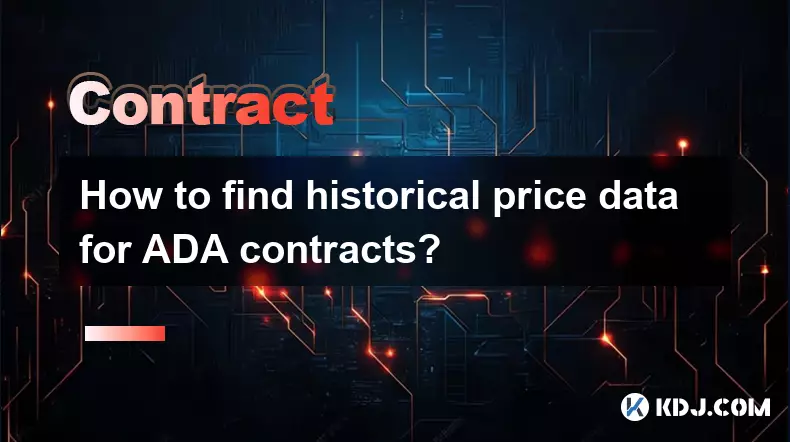
How to find historical price data for ADA contracts?
Oct 18,2025 at 10:18pm
Understanding ADA and Its Market Data Availability1. Cardano’s native cryptocurrency, ADA, operates on a decentralized blockchain that supports smart ...

How to hedge my spot Cardano portfolio with ADA contracts?
Oct 18,2025 at 05:36am
Hedging Your ADA Spot Holdings Using Derivatives1. Identify a reliable exchange that offers ADA futures or perpetual contracts. Exchanges like Binance...
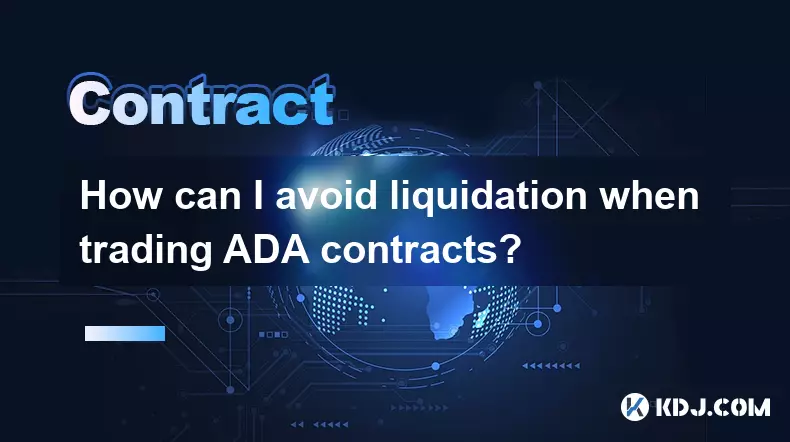
How can I avoid liquidation when trading ADA contracts?
Oct 18,2025 at 01:37am
Understanding Liquidation in ADA Futures Trading1. Liquidation occurs when a trader’s margin balance falls below the maintenance threshold required to...

How do you calculate profit and loss (PnL) for ADA contracts?
Oct 19,2025 at 12:18pm
Understanding ADA Contract Mechanics1. ADA contracts operate within the Cardano blockchain ecosystem, where smart contracts govern transaction logic a...
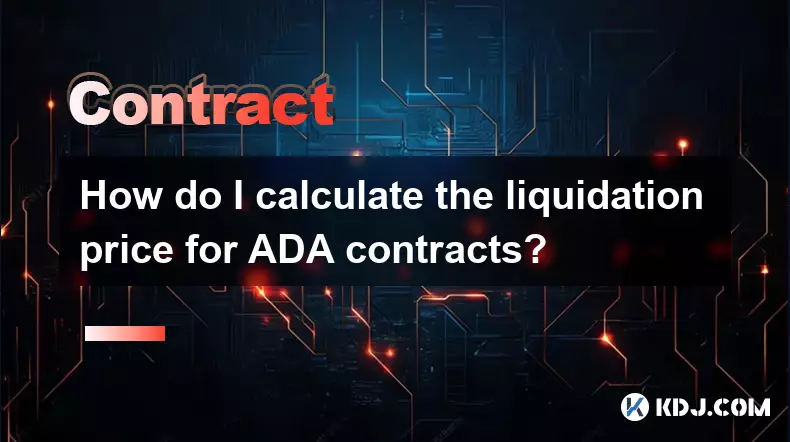
How do I calculate the liquidation price for ADA contracts?
Oct 18,2025 at 01:18am
Understanding Liquidation Price in ADA Futures Contracts1. The liquidation price in ADA futures trading refers to the market price at which a leverage...

What are quarterly vs. perpetual ADA contracts?
Oct 19,2025 at 08:55am
Understanding Quarterly and Perpetual ADA ContractsDerivatives trading in the cryptocurrency space has expanded rapidly, offering traders various inst...

How to find historical price data for ADA contracts?
Oct 18,2025 at 10:18pm
Understanding ADA and Its Market Data Availability1. Cardano’s native cryptocurrency, ADA, operates on a decentralized blockchain that supports smart ...

How to hedge my spot Cardano portfolio with ADA contracts?
Oct 18,2025 at 05:36am
Hedging Your ADA Spot Holdings Using Derivatives1. Identify a reliable exchange that offers ADA futures or perpetual contracts. Exchanges like Binance...

How can I avoid liquidation when trading ADA contracts?
Oct 18,2025 at 01:37am
Understanding Liquidation in ADA Futures Trading1. Liquidation occurs when a trader’s margin balance falls below the maintenance threshold required to...

How do you calculate profit and loss (PnL) for ADA contracts?
Oct 19,2025 at 12:18pm
Understanding ADA Contract Mechanics1. ADA contracts operate within the Cardano blockchain ecosystem, where smart contracts govern transaction logic a...

How do I calculate the liquidation price for ADA contracts?
Oct 18,2025 at 01:18am
Understanding Liquidation Price in ADA Futures Contracts1. The liquidation price in ADA futures trading refers to the market price at which a leverage...
See all articles





















![[4K 60fps] Astral by oc3andark (1 Coin) [4K 60fps] Astral by oc3andark (1 Coin)](/uploads/2025/10/19/cryptocurrencies-news/videos/k-fps-astral-ocandark-coin/68f438453fa33_image_500_375.webp)


